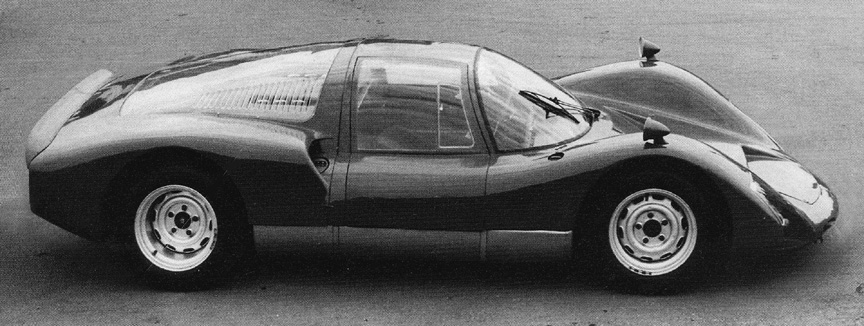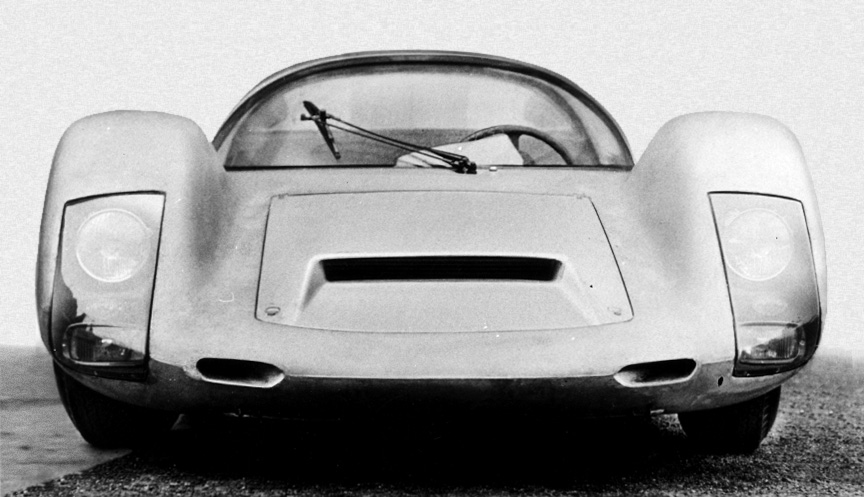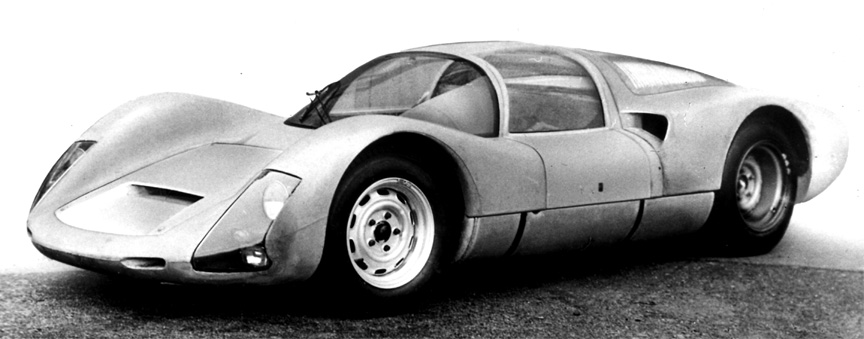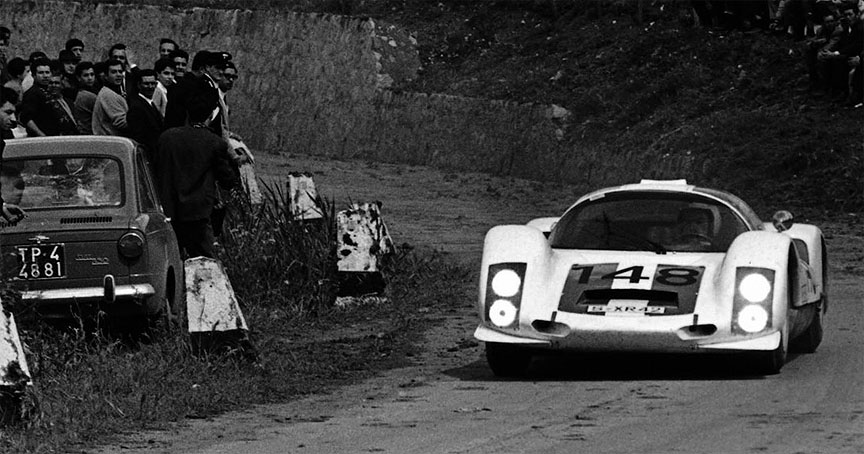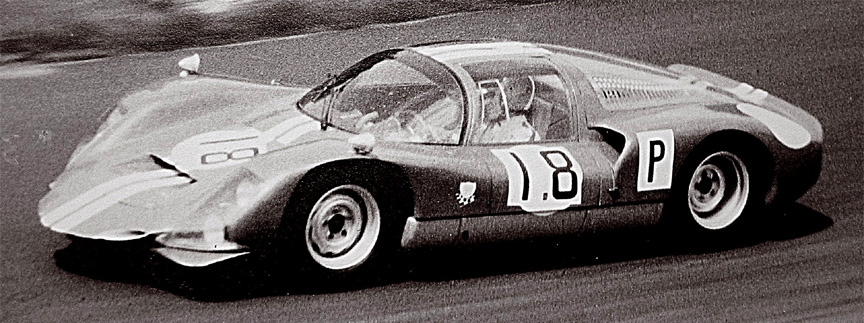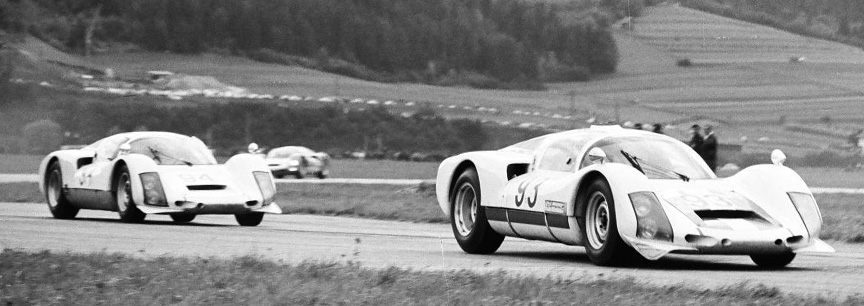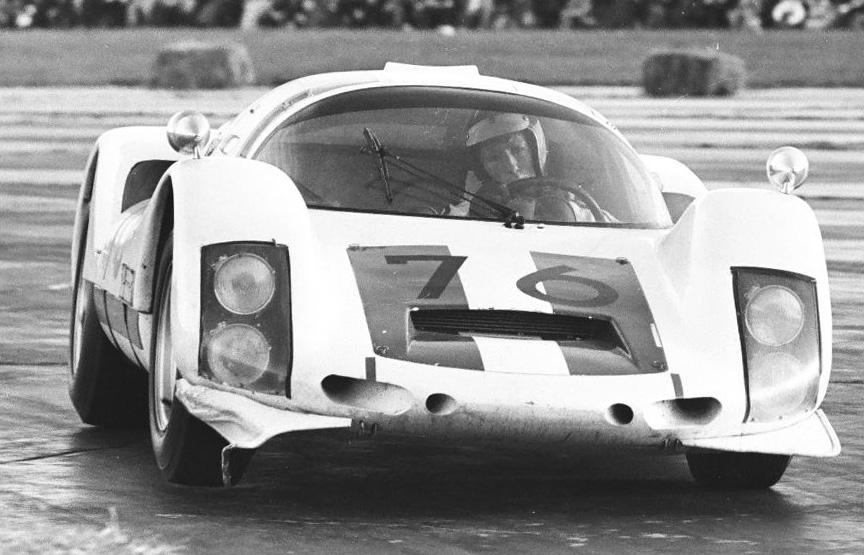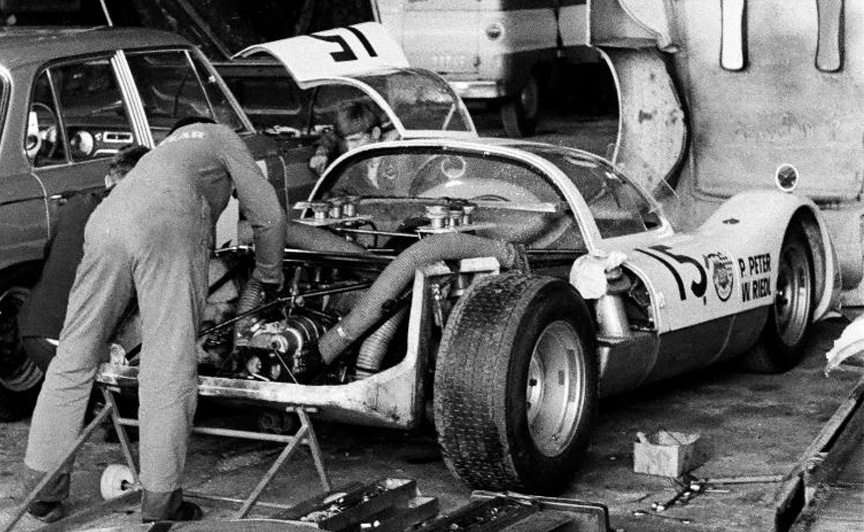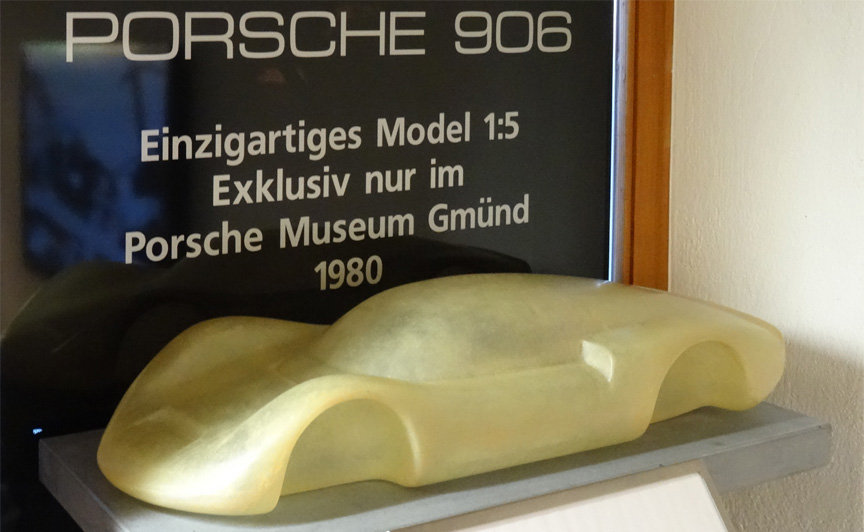Porsche 906 Carrera 6 (1966)
Developed for endurance sports car racing, the 906 was a street-legal racing car that raced in the FIA’s Group 4 class against cars like the Ferrari Dino 206 P. On the basis of the “Ollon Villars Bergspyder”, Porsche developed the type 906 Carrera, which was soon only referred to as Carrera 6.
The six-cylinder naturally aspirated engine, the wheel suspension with coil springs, the wishbones and stabilizers mounted in metal instead of rubber to improve driving behavior, and the brakes were adopted from the 904/6. The Group 4 racing car had a sturdy tubular steel grid frame, some of which served as an oil line.
Based off the same principles as the 904, the 906 used a boxed steel chassis with a fiberglass body that added rigidity to the design. This particular monocoque construction was very light and resulted in a car which typically weighed 1,300 lbs (580 kgs).
The Carrera 6, with its flat plastic body, barely a meter high, with gull-wing doors and the typical engine cover made of yellowish Plexiglas, produced 52 “standard” units, nine chassis with the 6-cylinder injection engine and four with the 2.2-liter 8 Cylinders that started out as prototypes.
The greatest success of the Porsche Carrera 6 “Standard” was undoubtedly the victory at the Targa Florio 1966. For Le Mans, three Carrera 6s were provided with a special long tail that lengthened the body by a good meter to the rear. They took the first three places in their class.
The Full Story
When the Porsche 901 was forced to be renamed, it was not the same case with the other Porsche model names with the zero in the middle. The 904 coupé got its commercial name Carrera GTS before the 901 was renamed to 911 and the type 906 coupé was called as the Carrera 6 from the beginning.
The 906 was designed by Erwin Komenda. He had set the design language for Porsche cars already decades earlier with the type 64 and the 356.
While the 904 had one fuel tank in front, the 906 was equipped with two tanks on the sides. This way the level of the fuel didn’t affect the handling as much as on the 904 with full tank versus empty tank.
To save weight, some of the tubes in the frame were used as oil channels between the engine and the oil cooler. While the 906 Ollon-Villars had the suspension parts from Lotus F1 car, the homologation 906 used the 904 suspension components and 5-bolt 15″ Porsche wheels (7″ front, 9″ rear).
Thanks to lightweight materials (magnesium, titanium), the 901/20 engine of the 904/6 and the 906/6 was 54 kg/119 lb (!) lighter than the 901/01 engine in the 911 (both are 2-litre boxer-6 engines).
Earlier FIA had stated that at least 100 cars had to be produced in order to qualify for the sports car class (the case with the 904), but the rules were changed and now only 50 cars had to be made. The sports class cars had to have 2 seats by the rules, so a smaller “passenger seat” had to be fitted. The first 906 Carrera 6 coupés were chassis 906-016 and 906-017. These were prototypes. The third Carrera 6 built, and the first sold to a customer, had chassis number 906-101.
The first race for the 906 coupé was the Daytona 24 hours on February 5-6, 1966. It was the first 24 hour race at the speedway on Daytona Beach, Florida. The 2-litre Porsche was naturally looking only for a class win. As the 50 car production run demanded for homologation in FIA sports car class was not completed yet, the 906 was signed up in the 2-litre prototype class, which it won with Hans Herrmann and Herbert Linge driving the car. The overall result was sixth after 7-litre Ford GT40s and a 4.4-litre Ferrari.
At the Sebring 12 hour race on March 26, 1966, factory team 906 K Coupe (906-103) driven by Hans Herrmann/Joe Buzzetta/Gerhard Mitter scored 2-litre prototype class victory and 4th overall after three GT40s. The front corners of the factory entered 906 were fitted with spoilers. The event was overshadowed by a tragic accident in the night where Mario Andretti’s Ferrari had a gearbox failure, locked up the wheels, and the privately entered 906 #48 (chassis 906-105) following him, crashed, totally killing 4 people as a result. The GT40 driver Bob McLean had killed himself earlier in the race. The deaths at Sebring in 1966 almost killed the race from happening again.
The next success for the 906 came at the Monza 1000 km race on April 25, 1966. The factory racing team entered 906 K Coupé (906-128) driven by Gerhard Mitter/Hans Herrmann scored the 2-litre prototype class victory and came 4th overall after larger engined Ferrari and two Ford GT40s.
Porsche made 50 cars by the end of April 1966 and the 906 was homologated from May 1966 in Group 4 GT. In reality more 906 were made, including sixty 906 K (short tail) Coupés. One of them had a 2.2-litre 8-cylinder engine and the rest were 6-cylinder Carrera 6. Five Carrera 6 were born with the fuel injection engine as 906 E and some carburetor Carrera 6 were converted to “E”-versions. The first fuel injected engine was installed in the prototype chassis 906-017 (that earlier had won the class at Daytona 24). The 906-017 was used for testing at Targa Florio. Targa Florio was also the first race for 906 E (chassis 906-143)
Porsche’s racing success sparked by visionary Ferdinand Piëch started with the overall victory of the 1966 Targa Florio. The winning 906 was driven by Herbert Müller/Willy Mairesse. The second place was taken with a Ferrari and the third place again with Porsche Carrera 6, driven by Vincenzo Arena/Antonio Pucci.
A 2.2-litre 8-cylinder 906 made (chassis 906-142) had to retire from the 1966 Targa Florio race because of an accident and it had bad luck also at the 1966 Nürburgring 1000 km. In the private hands the car might have raced also later (although not known if with the 8-cylinder 906 engine).
For the 1966 Le Mans 24h race, long-tail LH (“Langheck”) versions were made and now the standard 906 were called as 906 K (“Kurz”, short in German). The Le Mans podium was taken by 7-litre GT40s, followed by three 906 LHs of the 2-litre prototype class and the 7th finisher was a 906 K (906-143, #58) of Rolf Stommelen/Günther Klass of the 2-litre sports car class. In this class there were only two other 906 Ks, but those didn’t finish.
At the Zeltweg 500 km race on September 11, 1966, three Porsche 906 took the podium: 1st Gerhard Mitter/Hans Herrmann (#14, chassis 906-128, the Targa Florio winner), 2nd Jo Siffert (906-137, #12), 3rd Udo Schütz/Herbert Linge (906-124, #15). 4th place was taken by a GT40 and then two more 906 followed.
While the 906 Carrera 6 was launched and homologated in 1966, Porsche racing engineers knew the 15″ 5-bolt wheels were not the best for racing, so, 13″ central nut Formula 1 wheels with special tyres were adapted and the Porsche 910 was born.



